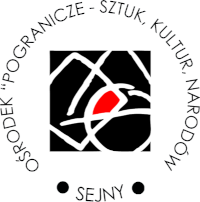The project partners conducted their own creative activities in borderland regions and multicultural communities, where the burning issues are matters of memory, destruction of cultural heritage and environment, social and ethnic conflict, immigration and new community building. The work was structured around three creative laboratories with artists (Birmingham & Black Country, Bela Rečhka, Sejny) and the development of travelling workshops. Each laboratory explored the concept and reality of intercultural dialogue in their locality. These were undertaken in Bela Rechka, Skopje, Wolverhampton, Hania, Walsall, Sejny, Baku, Warsaw, Leeds, Birmingham and Solihull.
In preparation for the project, we attended the New Agora in Wrocław, the capital of the Polish region of Lower Silesia. The New Agora events are an ongoing series organised in different countries by the Borderland Foundation. Event details can be downloaded here. And here’s some pictures from the event [below, the New Agora Wroclaw gallery].
The project background
Terrible times are marked by the rhythm of destruction and construction, chaos and order, rapid demolition and simultaneous building. What was there is destroyed (cities, ideological notions, bridges, criteria, libraries, norms, churches, marriages, monuments, lives, graves, friendships, homes, myths) the old truth is destroyed. What will become the new truth is rapidly built in its place.
- Dubravka Ugresic, The Culture of Lies.
Over the several years I have developed a series of contacts and working relationships with artists and cultural animators working in Central and Eastern Europe and the Balkans. This kind of cultural animation work is generally described as inter-cultural dialogue. Krzysztof Czyzewski, President of The Borderland Foundation, puts it this way: “Intercultural dialogue means a practice of ethos of tolerance in the sphere of daily life. Arts and education constitute a vehicle that makes this practice possible.”
From an old-school community arts perspective, I am curious to find out how these practices can inform creative work that is undertaken here in the West Midlands, at a time when tensions between different communities in the UK are increasing and the growth of prejudice forces confrontations in defence of ‘separateness.’ Trevor Philips, from the Commission For Racial Equality (in the Hugh Gaitskill Memorial Lecture at Nottingham) recently asked this question: “How should people who are very different in their traditions and lifestyles come to share the same values, and how can they manage to live in the same space peacefully and prosperously and have felt strong affinities?”
At the beginning of the 21st century we see, on the one hand, an ever diversifying and fragmenting ‘community of interests’ and on the other a drawing together and merging of interests that are cross-border and permeable. What is the role of the community artist in navigating these shifting cross-cultural tides? How might we re-imagine our practice and consider future roles. My experience of community arts is that it has shifted from an oppositional movement to one that proposed. In doing so, many of its principles and values have become adopted into the language and agendas of local authorities and governmental agencies. Many of us have moved on. Where might we move to now, in the coming decades? How might those artists, whose practice is informed by an engagement with a community, operate with even greater effectiveness in the future? What else may be proposed? Might it be needed as an essential survival skill? How might artists operate in the role of mediators, as a person who can both literally and metaphorically cross borders?
This feels particularly relevant at a time when urban areas in the UK (and further into the European hinterland) no longer have a single dominating cultural force but ‘multi-minorities’. On a daily basis I can meet on the street Iraqi’s, Bosnians, Kosovo’s, Afghanis, Slovakians, Ukrainians, Somalians, Koreans and Chinese. There are also, of course, the older migrant communities from Bangladesh, India, Yemen, Pakistan, the islands of the Caribbean, the Irish and the Polish. An enlarged EU also brings a new influx of migrants, particularly a new generation of Polish migrants.
We now live in a European diaspora of increasingly displaced and shifting communities and loyalties, of radicalised groups and demoralised multiculturalism. How might artists engage meaningfully with these communities and learn from those whose voices we have never heard? Minorities rarely share feelings of safety, and community insecurities often lead to conflict. Community arts has always had a role to play in profiling community voices and aspirations. How might we respond to the reshaping and breaking up of communities? In the years to come, how might we avoid the damaging effects of entrenchment and ghettoisation? And how might we exert greater influence?
by Brendan Jackson, source: www.brendanjackson.co.uk



















